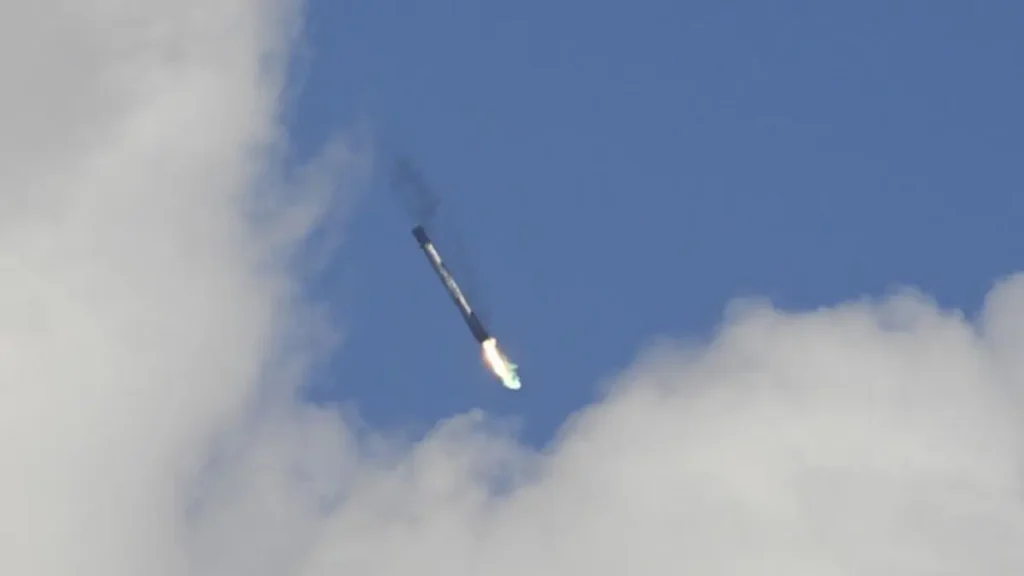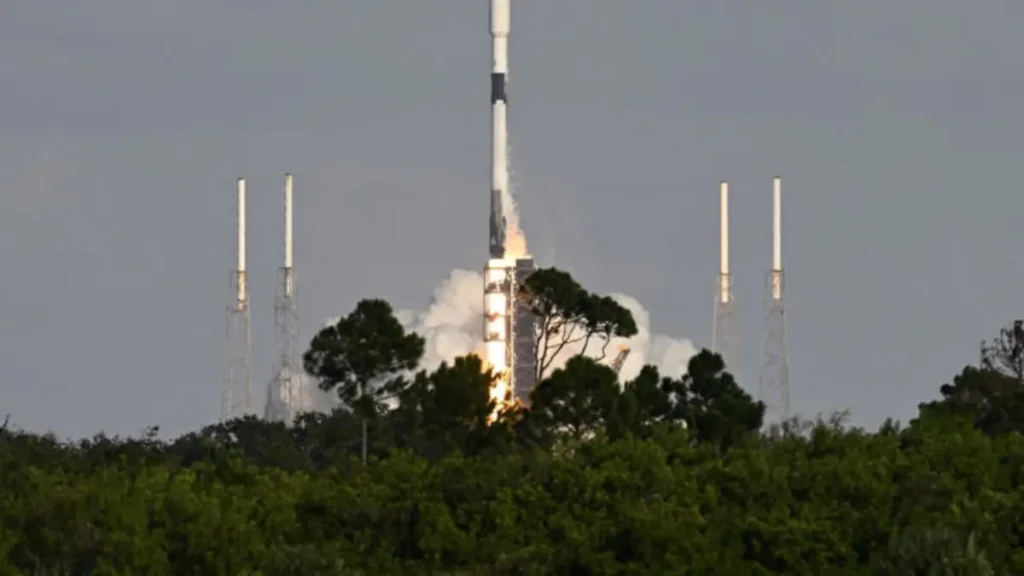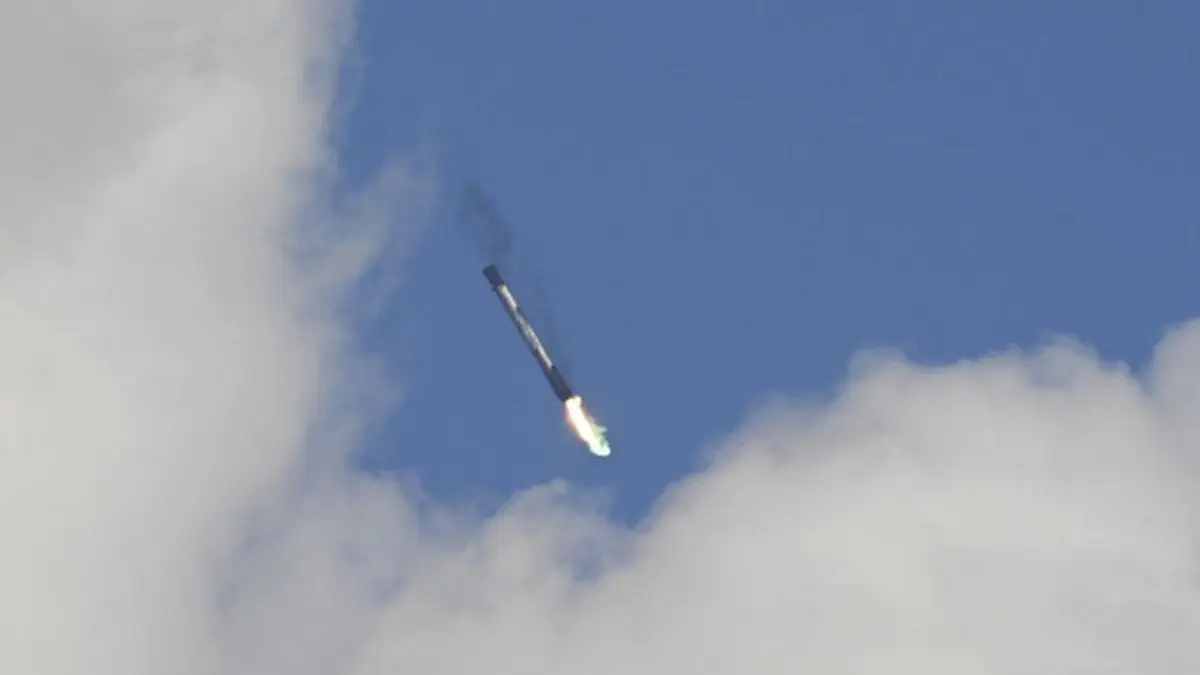SpaceX launches cargo freighter Cygnus XL aboard a Falcon 9 rocket to the International Space Station, delivering 11,000 pounds of supplies, experiments, and tributes to astronaut Willie McCool.
SpaceX Launches Cargo Freighter to the ISS

On September 14, 2025, SpaceX launches cargo freighter to the International Space Station (ISS) from Cape Canaveral Space Force Station in Florida. This mission, a collaboration with NASA and Northrop Grumman, carried the Cygnus NG-23 spacecraft, also known as the S.S. William “Willie” McCool, honoring the astronaut who perished in the 2003 Columbia shuttle disaster.
The successful launch once again highlighted the importance of commercial partnerships in space exploration and NASA’s reliance on SpaceX for resupply missions to the ISS.
Key Highlights of the Mission

| Mission Aspect | Details |
|---|---|
| Launch Provider | SpaceX Falcon 9 |
| Spacecraft | Northrop Grumman Cygnus NG-23 (S.S. Willie McCool) |
| Launch Site | Cape Canaveral Space Force Station, Florida |
| Date & Time | Sept. 14, 2025, at 6:11 p.m. EDT |
| Cargo Weight | 11,000 pounds |
| Mission Duration | Until March 2026 |
| Cargo Contents | Semiconductor crystals, cryogenic fuel equipment, UV light system, pharmaceuticals, food, daily supplies |
| Booster Landing | Successful at Cape Canaveral, creating a sonic boom |
NASA and SpaceX Partnership
The fact that SpaceX launches cargo freighter missions regularly is a testament to NASA’s Commercial Resupply Services (CRS) program. By working with private companies such as SpaceX and Northrop Grumman, NASA ensures a steady stream of supplies, scientific experiments, and essential equipment reach the ISS.
This collaboration reduces costs, speeds innovation, and provides safe, reusable transport systems like the Falcon 9 booster, which once again successfully returned to Cape Canaveral.
Cargo Details
The cargo freighter mission delivered more than 11,000 pounds of supplies to the ISS, including:
- Materials for semiconductor crystal growth in microgravity, expected to advance electronics.
- Cryogenic fuel tank equipment for improving future deep-space missions.
- Specialized UV light systems to prevent microbial growth in ISS water supplies.
- Pharmaceutical crystals that could help develop cancer treatments.
- Food and daily necessities for astronauts stationed at the ISS.
By sending these materials, SpaceX launches cargo freighter that advances both scientific progress and astronaut well-being.
Honoring Astronaut Willie McCool
This mission carried a symbolic element. NASA named the Cygnus NG-23 spacecraft the S.S. William “Willie” McCool, in memory of the Columbia shuttle pilot who died during reentry in 2003.
This tribute emphasizes how every SpaceX cargo mission not only supports science and technology but also honors the legacy of astronauts who paved the way for modern exploration.
The Role of Falcon 9
The Falcon 9 rocket played a central role as SpaceX launches cargo freighter missions. Its reusable design reduces mission costs and ensures rapid turnaround for future launches.
Eight minutes after liftoff, the first-stage booster successfully landed back at Cape Canaveral, creating a sonic boom that resonated across Brevard County, Florida. This achievement underscores why Falcon 9 has become the backbone of both crewed and cargo missions.
Comparison with Russia’s Progress Freighter
Interestingly, the SpaceX Cygnus launch coincided with Russia’s Progress cargo freighter, which arrived at the ISS a day earlier.
| Spacecraft | Launch Provider | Cargo Capacity | Lifespan | Disposal Method |
|---|---|---|---|---|
| Cygnus XL (NG-23) | SpaceX/Northrop Grumman | 11,000 lbs | Until March 2026 | Burns up on reentry |
| Progress Freighter | Roscosmos | ~6,600 lbs | 6 months | Burns up on reentry |
This highlights the global cooperation that sustains the ISS, with multiple nations contributing to its supplies.
Why SpaceX Cargo Missions Matter
Every time SpaceX launches cargo freighter, the world gains:
- Essential supplies for astronauts living in microgravity.
- Opportunities for groundbreaking research in physics, biology, and medicine.
- Advances in technology that may eventually benefit life on Earth.
- Reusable rocket progress, lowering long-term costs.
- International cooperation, showcasing how space brings nations together.
Such missions reinforce the significance of low-Earth orbit exploration as a stepping stone for Mars and beyond.
The Future of SpaceX Cargo Missions
Looking ahead, SpaceX launches cargo freighter missions will continue under NASA’s CRS program. Plans include:
- More semiconductor research in orbit.
- Advancements in cryogenic storage critical for lunar and Martian exploration.
- Development of pharmaceuticals in microgravity.
- Increasing private-sector collaboration in space research.
By 2030, NASA expects the ISS to transition toward a commercial space station model, where companies like SpaceX will play even larger roles.
FAQs
1. What was the latest SpaceX cargo mission?
On September 14, 2025, SpaceX launches cargo freighter carrying the Cygnus NG-23 spacecraft to the ISS.
2. How much cargo did SpaceX deliver?
The cargo freighter mission delivered 11,000 pounds of supplies, food, and scientific experiments.
3. What was unique about this mission?
NASA named the Cygnus NG-23 the S.S. William “Willie” McCool, honoring a Columbia astronaut.
4. How long will the cargo freighter stay at the ISS?
It will remain attached until March 2026, before reentering the atmosphere and burning up.
5. Did the Falcon 9 booster return safely?
Yes, the Falcon 9 booster landed back at Cape Canaveral, creating a sonic boom.
6. What experiments are aboard the cargo freighter?
The mission carried semiconductor crystals, cryogenic fuel equipment, UV light systems, and pharmaceutical experiments.
7. How does this compare to Russia’s Progress freighter?
The Russian spacecraft arrived at the ISS a day earlier, carrying about 6,600 pounds of cargo.
8. Why does NASA partner with SpaceX?
NASA uses commercial resupply services to reduce costs and increase efficiency in space missions.
9. How often does SpaceX launch cargo to the ISS?
Several times a year under its CRS contract with NASA.
10. What will happen to the Cygnus spacecraft after the mission?
It will detach in March 2026 and incinerate during reentry, along with ISS waste.
Conclusion
The story of how SpaceX launches cargo freighter to the ISS is not just about supplies. It is about scientific discovery, astronaut survival, and honoring past heroes. With 11,000 pounds of critical cargo, this mission demonstrated the power of collaboration between NASA, SpaceX, and Northrop Grumman.
As humanity pushes further into space, every SpaceX resupply launch ensures the ISS remains a hub of exploration and innovation, laying the groundwork for future missions to the Moon and Mars.

